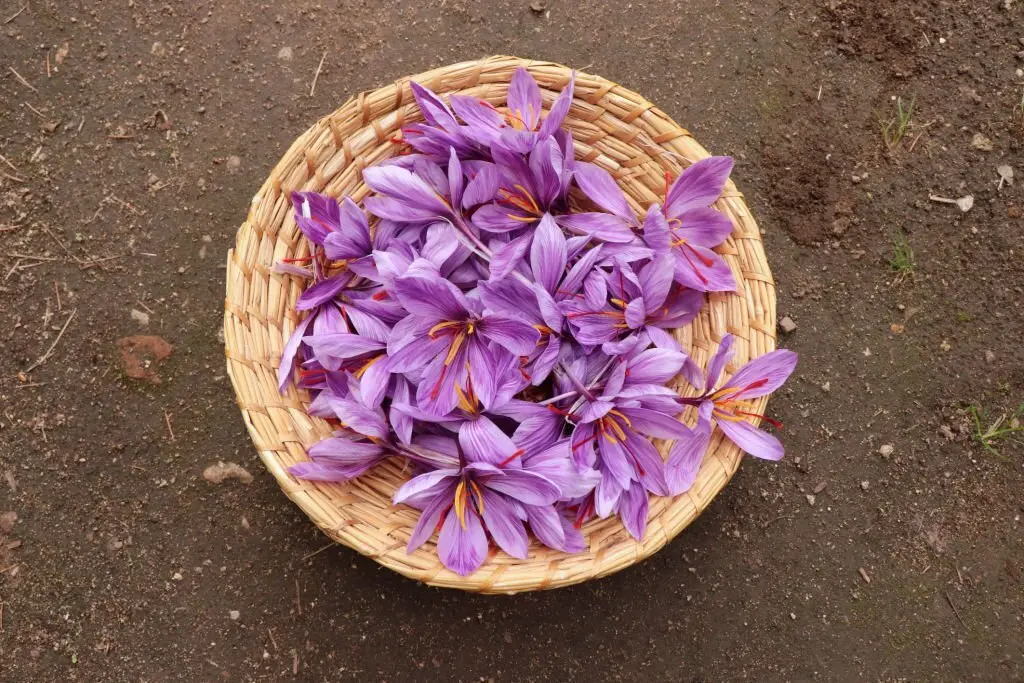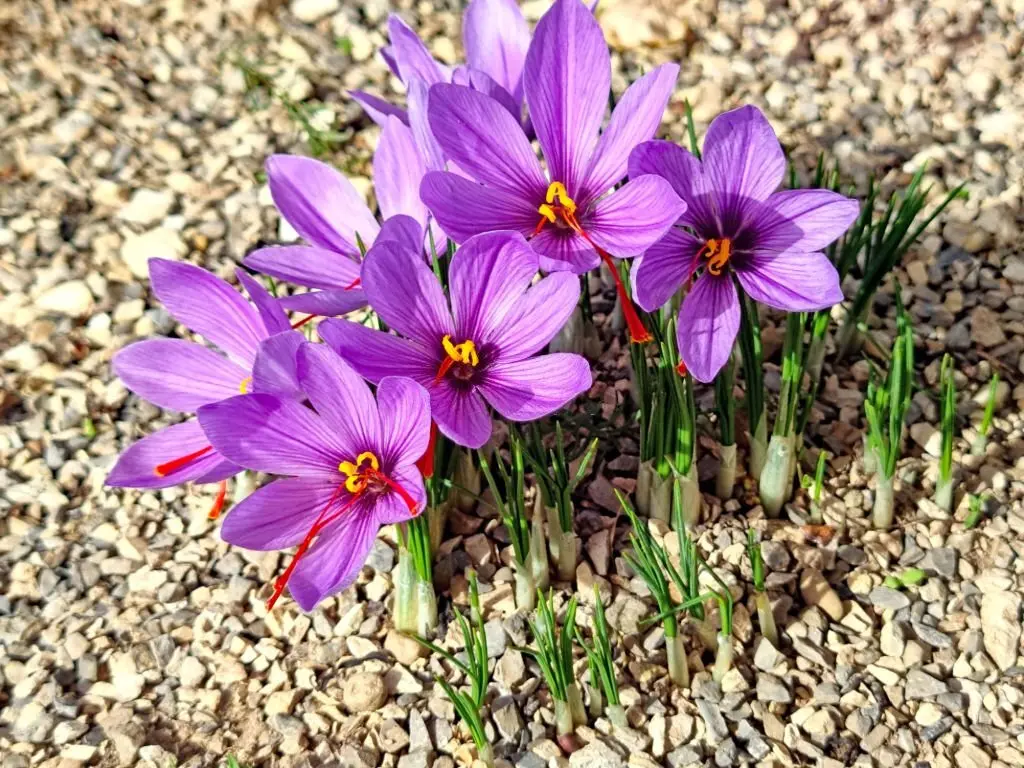The Richness of Kesar and Jafran : Everything You Need to Know
Kesar and Jafran are two of the most valuable and expensive spices in the world, known for their unique aroma, flavor, and color. These spices have been used for centuries in cooking, perfumery, and traditional medicine, and are still in high demand today.
Kesar, also known as saffron, is derived from the dried stigma of the Crocus sativus flower, which blooms for only a few weeks in autumn. Each flower has only three stigmas, which are hand-picked, dried, and then used in various culinary and medicinal applications. Kesar is used as a natural food coloring agent and flavor enhancer in a wide range of dishes, including biryanis, desserts, and drinks.
Jafran, also known as turmeric, is derived from the rhizome of the Curcuma longa plant, which is native to India and Southeast Asia. Jafran is widely used in Indian, Middle Eastern, and Southeast Asian cuisines, as well as in traditional medicine. It is known for its vibrant golden color, earthy flavor, and health benefits, such as anti-inflammatory and antioxidant properties.

kesar and jafran
While both kesar and jafran have their unique properties and uses, their prices can vary significantly. The price of kesar can range from a few hundred dollars to several thousand dollars per kilogram, depending on its quality, origin, and market demand. In contrast, the price of jafran is relatively affordable, with a kilogram typically costing less than $10.
If you are looking to buy kesar, it’s essential to ensure that you are getting a high-quality product. Look for kesar that is deep red in color, has a strong aroma, and comes from reputable sources. Some of the best kesar comes from Iran, Spain, and Kashmir. When it comes to jafran, look for organic, non-irradiated, and non-GMO varieties to ensure that you are getting the best quality and health benefits.
Check out our article on the Saffron In Traditional Medicine [Nature And Benefits 2023]
Kungumapoo
Kungumapoo, also known as Saffron, is a vibrant and aromatic flower that has a special place in Indian culture and tradition. The flower is commonly used as an offering in Hindu temples, as well as for auspicious occasions such as weddings and festivals. The vibrant orange color and delicate fragrance of Kungumapoo are also valued for their beauty and aroma therapy benefits. In addition to its cultural and aesthetic significance, Kungumapoo is also used in traditional medicine for its antiseptic and anti-inflammatory properties. Overall, Kungumapoo is a beloved flower with a rich history and many uses in Indian culture and beyond.
kesar price 1kg
Kesar, commonly known as saffron, is a highly sought-after spice known for its unique flavor, aroma, and vibrant color. The price of 1kg of kesar can be quite steep, often ranging from $500 to $5,000, depending on factors such as quality, origin, and availability. Factors contributing to its high price include labor-intensive harvesting methods, low yield per plant, and the fact that it is primarily grown in specific regions like Iran, Spain, and India. As a result, kesar remains a luxury ingredient, typically used sparingly in dishes to enhance their flavor and presentation.

In conclusion,
kesar and jafran are two of the most treasured and versatile spices in the world, with a long history of culinary and medicinal use. Whether you are a chef, a spice enthusiast, or a health-conscious individual, these spices are sure to add flavor, color, and health benefits to your life. Just remember to choose wisely and savor them in moderation.
Thank you for taking the time to read this article about kesar and jafran. We hope you found the information useful and informative. Whether you are a seasoned chef, a spice enthusiast, or just someone looking to learn more about these treasured spices, we hope you gained some valuable insights. If you have any further questions or comments, please don’t hesitate to reach out. Thank you again for reading!
Kesar and Jafran FAQs
What is kesar and where does it come from?
Kesar, also known as saffron, is a spice derived from the dried stigma of the Crocus sativus flower, which blooms for only a few weeks in autumn. It is widely cultivated in Iran, Spain, and Kashmir.
What is jafran and where does it come from?
Jafran, also known as turmeric, is a spice derived from the rhizome of the Curcuma longa plant, which is native to India and Southeast Asia.
What are some culinary uses of kesar?
Kesar is used as a natural food coloring agent and flavor enhancer in a wide range of dishes, including biryanis, desserts, and drinks.
What are some health benefits of jafran?
Jafran has anti-inflammatory and antioxidant properties and is used in traditional medicine to treat a range of conditions, such as arthritis, digestive disorders, and skin problems.
Why is kesar more expensive than jafran?
Kesar is more expensive than jafran because it is difficult to cultivate and harvest, with each flower producing only three stigmas, and requires labor-intensive processing. Additionally, the quality of kesar can vary significantly, with high-quality varieties fetching a premium price.
What should you look for when buying kesar and jafran?
When buying kesar, look for a deep red color, strong aroma, and reputable sources from countries like Iran, Spain, or Kashmir. When buying jafran, look for organic, non-irradiated, and non-GMO varieties to ensure the best quality and health benefits.
What is the significance of Kungumapoo in Hindu culture?
Kungumapoo, also known as Saffron, is a significant flower in Hindu culture and tradition. It is commonly used as an offering in temples, as well as for auspicious occasions such as weddings and festivals. The vibrant orange color and delicate fragrance of Kungumapoo are also valued for their beauty and aroma therapy benefits. In some regions, the flower is also used to make Kumkum or Sindoor, a red powder that is applied on the forehead as a symbol of marriage and good fortune. Overall, Kungumapoo holds a special place in Hindu culture and is considered a symbol of purity, prosperity, and devotion.
Check out our article on the What Is Saffron Spray? | Benefits And Uses


